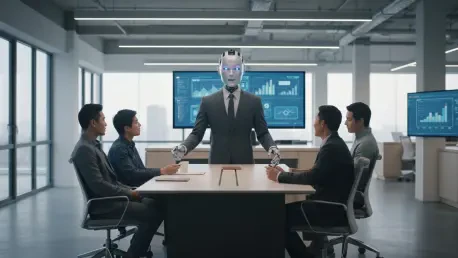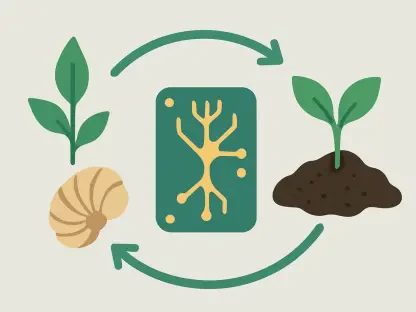Listen to the Article
The integration of artificial intelligence into collaborative environments is rapidly evolving, affecting team structures and interactions. While it can enhance performance in areas like chess and medicine, partnerships between workers and AI often face challenges in communication and coordination, especially as trust in these programs may decline over time. Future research should integrate computer science and psychology more effectively to better understand the interactions between people and intelligent systems, thereby enhancing teamwork.
People increasingly view cognitive computing as an active participant rather than a mere tool. Autonomous agents can manage tasks such as monitoring and coordinating with collaborators. These partnerships consist of at least one person and one autonomous agent, both of which work towards shared goals. Experts believe that these modules will work better with humans in the future. There is still debate about how much they can participate, but their ability to collaborate is expected to improve a lot.
This article examines the impact of intelligent systems on synergy, focusing on aspects of collaboration, existing challenges, and potential future partnerships between people and these technologies.
Emerging Themes in Human–AI Collaboration Research
Recent research on human–AI teamwork is examining how artificial intelligence operates not only as a tool but also as an active collaborator within groups. As neural networks gain autonomy and cognitive capabilities, questions arise about how people and intelligent systems can effectively share tasks, communicate, and build trust. Current studies focus on understanding the dynamics that shape successful partnerships, including how units coordinate and communicate, how they develop trust and shared cognition, and how these factors influence overall team performance. Together, these areas highlight both the promise and complexity of integrating AI into collaborative work environments.
Team composition
Team composition affects how well a group works together and performs. However, studying this can be complicated due to the various setups and the unique traits of the members. The introduction of AI “colleagues” complicates this further, which may explain the limited research in this area.
One study examined three team structures: human-only, mixed, and AI-only. In a simulated emergency response scenario, results indicated that mixed groups performed the worst, while AI-only setups excelled in performance and situation awareness. Although less effective, configurations with only employees demonstrated higher levels of shared mental models, which enhance collaboration. The presence of AI hindered the development of these shared mental models among team members.
A study on situation awareness found that people in groups that included AI struggled more to create shared understanding. The disparity was primarily due to communication difficulties. Departments that had a higher proportion of people were considered better at coordination. This perspective stemmed from participants’ beliefs rather than the AI’s actual behavior, as interactions were primarily with humans.
Team processes
Integrating artificial intelligence into organizations affects vital processes such as coordination and communication, which are essential for optimal performance. However, there is limited research on how AI influences these dynamics within groups.
Studies indicate that when AI substitutes a person, these groups often face increased coordination failures and reduced performance. Such a difference is particularly evident among less skilled individuals, who may exert less effort. Communication can also become more challenging, especially during high-pressure situations. Conversely, training in coordination can lead to improved outcomes.
In investigations involving self-piloting aircraft systems, those utilizing AI underperformed compared to those composed solely of workers, regardless of skill level. Furthermore, groups that included AI tended to share information less actively, which diminished their overall effectiveness.
These insights suggest that the introduction of AI can disrupt crucial processes and hinder effective interactions. Additionally, the text highlights two key elements related to AI-inclusive setups: trust and shared understanding, encompassing shared mental models
Trust
Trust in new technologies and artificial intelligence has become a significant area of focus in robotics and human-computer interaction. Research indicates that confidence is essential for effective collaboration with artificial intelligence, just as it is for traditional staff.
Generally, groups tend to trust new members more than automated systems, leading to higher levels of trust within teams that are entirely composed of people. However, individuals might place more confidence in suggestions from cognitive computing for specific tasks due to their advanced capabilities. It’s essential to note that trust in new technologies can diminish over time, often resulting from an initial overestimation of their abilities. In contrast, trust in interpersonal partnerships typically develops more gradually.
Key factors influencing trust include physical presence, transparency, explainability, reliability, the nature of the task, and behaviors such as responsiveness. There is a growing recognition of the importance of studying trust at the team level, acknowledging it as an emergent state that requires a comprehensive understanding to enhance dynamics involving any sort of innovation.
Shared cognition
Shared cognition encompasses concepts such as shared mental models, situational awareness, transactive memory frameworks, and collective intelligence. Aligning team members’ mental frameworks is crucial for effective collaboration, as it allows individuals to anticipate each other’s needs and improve overall performance.
Research shows that groups working with automated systems report lower levels of shared frameworks compared to fully employed employees. While some studies have explored their role within hybrid settings, the quantitative link between these factors and performance remains unclear. Key challenges include designing cognitive models suited for automation and developing effective measurement methods for collaborative contexts.
To function effectively in hybrid environments, individuals need to create a mental framework that integrates both human and automated members, recognizing the latter as smart technology. Transparency and explainability in computer applications are essential. Additionally, these systems must understand behavior, often referred to as the Machine Theory of Mind. Recent advancements in cognitive science are helping to create models that emulate human inference, facilitating better alignment with automation.
Team performance
In many cases, people only consider hybrid partnerships of human and machine intelligence when they outperform each other. Collaboration can lead to better results in fields like chess and medicine. However, research shows that when tasks become more complex, departments composed of either people or machines often perform better than mixed teams. This underperformance can stem from issues such as poor coordination and communication, which negatively impact trust and confidence.
A key factor is how comfortable people are with machines. If someone is unfamiliar with a program, it can be confusing for them, which makes teamwork more challenging. On the other hand, machines may not work well as team members because they often lack an understanding of human behavior. This makes it difficult for them to predict what people will do and to adjust to their needs. For an improved partnership, both parties must enhance their knowledge and adaptability to one another.
The Road Ahead for Human–AI Collaboration
Researchers outline the following five key priorities for future studies in human-AI cooperation:
First, researchers should create test environments based on real-world examples. Current studies often do not apply to many real-world situations. Many people view AI participants as tools, which raises questions about whether researchers are studying true collaboration, mainly because the level of AI autonomy in these environments often remains unclear.
Second, it is vital to build on previous research in human-agent interaction. Earlier studies on trust, delegation, and social interactions remain relevant but are often overlooked in recent research. This oversight may limit understanding of how people and AI work together.
Third, focusing on the individual aspect is essential. Users have varying levels of technological skills and preferences that affect their engagement with AI. Research should explore these differences to improve how AI agents are designed and integrated into collaborative efforts.
Fourth, successful partnerships between people and AI will require an interdisciplinary approach. This collaboration should span multiple fields, including computer science, psychology, and sociology. It can avoid isolated research efforts and create a shared framework for the field, including a common way to categorize AI across different contexts.
Ultimately, having a robust theoretical framework is essential for advancing this field. Although existing theories on human-AI interactions exist, many do not address new challenges. The transactive systems model of collective intelligence presents a promising approach for utilizing cognitive frameworks to design and comprehend effective human-AI synergy.
Conclusion
This review examines the challenges of integrating AI with employees in the workplace. Recent advances in AI technology, such as intelligent voice assistants, demonstrate that AI can function as a valuable coworker. These alliances can understand emotions, ask insightful questions, observe their surroundings, and engage in natural conversations with both people and other AIs. While cognitive computing appears ready to be integrated into teams, further research is needed. In-depth knowledge will help unlock the full potential of human-AI collaboration and support effective teamwork across different fields.









